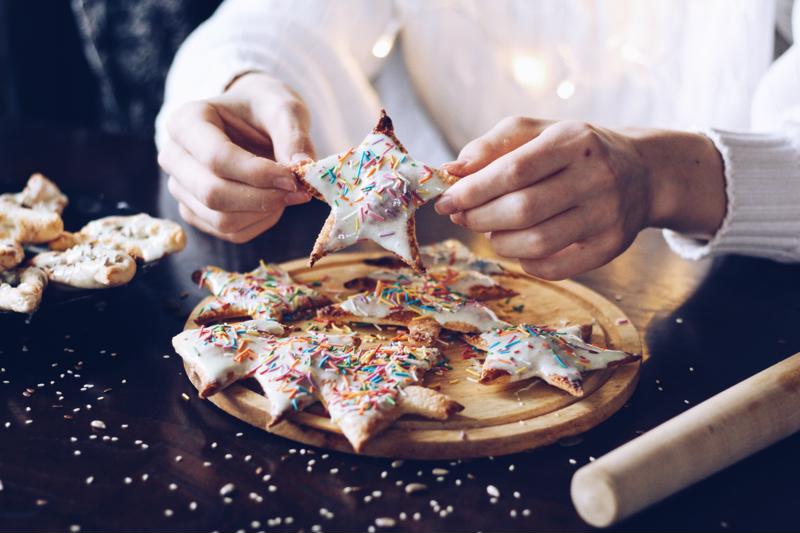Culinary students will learn the many factors that go into creating a delicious dessert, but flavor isn’t everything when it comes to perfect pastries. Texture, aroma and presentation all play a large role in attracting customers to a bakery. As online pastry students will learn, pastries should not only taste good, but look good, too.
Understand the science of pastry
The first step in creating beautiful pastries is mixing up a batch of well-made pastry dough. If the foundation of your dessert is sub-par, there’s only so much that the tips and tricks below can do. A basic pastry dough recipe includes a few tablespoons of cold water, flour and fat – butter is commonly used for its flavor and texture. Some recipes also call for a small amount of salt, but not all.
 To make pastries that look like these, you need four things: cookie cutters, frosting, sprinkles and cool temperatures.
To make pastries that look like these, you need four things: cookie cutters, frosting, sprinkles and cool temperatures.Begin by combining the flour, butter and salt, if you’re using it. Do this in a food processor or using your fingers. Aim for a crumbly texture.
This step coats the flour in a protective fatty layer, which leads to the classic flaky texture. If it’s not coated enough, the water you add later will bind with the flour more completely, which will lead to long gluten chains. The result will be less flaky and more stretchy, like a bread dough. However, if your flour is too well-coated, the dough will fall apart more easily, science writer Andy Connelly wrote for The Guardian.
Next, stir in the cold water. Temperature matters here, as warm water will more readily soak into the flour and build gluten proteins, according to the online baking advice resource Taste.com.au.
Finally, wrap the dough in plastic and store it in the refrigerator or another cool place for 15 minutes. This helps resolidify the butter , allowing for easier handling later on.
Keep it cool
Temperature is particularly important when you’re mixing your dough. However, there are certain temperature requirements at nearly every step of the pastry-making process.
After your pastries are fully baked, don’t frost or decorate them until they’re completely cooled. Warm dough or filling can cause add-ons to melt and slide, resulting in a sloppy work of art.
For fully frosted desserts like cakes, frosting twice and refrigerating between the two can make a big difference. The first layer is called the crumb coat because the soft cake tends to crumble up and mix into the frosting, leaving behind a bumpy, incomplete-looking layer. Chilling solidifies it, allowing you to paint on a smooth outer layer of frosting.
Get creative with presentation
Pastry dough is unique in that it can be molded and crafted into fun shapes and designs.
To make a pastry of four hearts converging at their corner, begin with a square of pastry dough. Drop a dollop of filling, like a fruit jam, into the center, then brush an egg wash along the four sides. Fold the corners to the center, roll into a ball and flatten with the seam side down, as shown in a Tasty video. Make eight incisions equally spaced apart, like you’re cutting a pizza but leaving the center intact. Invert each resulting triangle, then push each one closer to its neighbor. When the pastry cooks, the rays will puff up and meld together, giving the appearance of a delicious four-leaf clover.
Pastry chefs can also get creative with pie crusts. Use various utensils to create fun borders. Fork tines work well for this, but so do the patterned handles of dinnerware. Use a small cookie cutter to stamp out patterns with the dough, then arrange the shapes atop or along the side of your pie.




